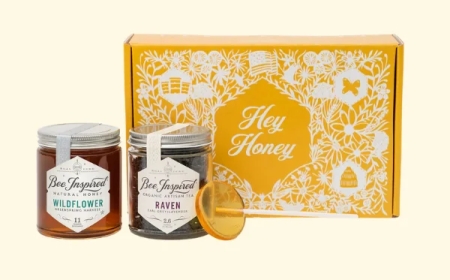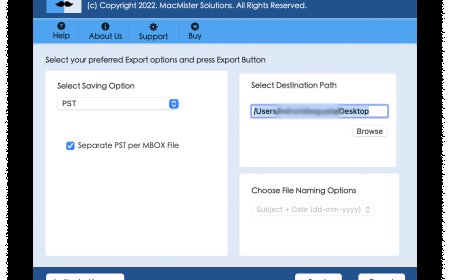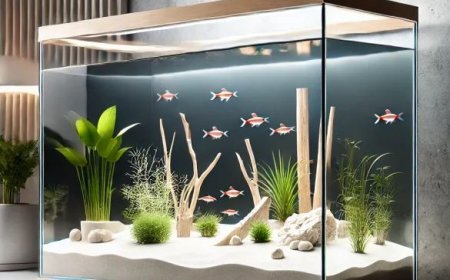How to Enjoy a Wine Tasting at Local Vineyards
How to Enjoy a Wine Tasting at Local Vineyards Wine tasting at local vineyards is more than just sipping a glass of red or white—it’s an immersive sensory journey that connects you with the land, the climate, the craft, and the people behind every bottle. Whether you’re a seasoned enthusiast or a curious beginner, visiting a vineyard offers a rare opportunity to experience wine in its most authent
How to Enjoy a Wine Tasting at Local Vineyards
Wine tasting at local vineyards is more than just sipping a glass of red or white—it’s an immersive sensory journey that connects you with the land, the climate, the craft, and the people behind every bottle. Whether you’re a seasoned enthusiast or a curious beginner, visiting a vineyard offers a rare opportunity to experience wine in its most authentic form. Unlike purchasing wine from a store or ordering online, a vineyard visit allows you to engage with the winemaking process firsthand, understand terroir, and develop a deeper appreciation for the nuances that make each wine unique.
The importance of enjoying wine tastings at local vineyards extends beyond personal pleasure. It supports small-scale producers, preserves regional wine traditions, and fosters sustainable agriculture. Local vineyards often operate with smaller footprints, using organic or biodynamic methods, and rely on direct consumer relationships to thrive. By visiting them, you become part of a larger movement toward mindful consumption and community-driven commerce.
This guide is designed to help you fully enjoy and benefit from your vineyard visits. From preparation to post-tasting reflection, we’ll walk you through every step, equip you with best practices, recommend essential tools, showcase real-world examples, and answer common questions. By the end, you’ll not only know how to taste wine like a professional—you’ll know how to connect with it on a deeper, more meaningful level.
Step-by-Step Guide
1. Research and Select Your Vineyard
Not all vineyards are created equal. Before you book a visit, take time to research local options. Start by identifying regions known for wine production near you—whether it’s the Finger Lakes in New York, the Willamette Valley in Oregon, or the Texas Hill Country. Use online resources like wine region maps, local tourism boards, or apps like Wine Folly or Vivino to find highly rated small producers.
Look for vineyards that offer guided tastings rather than self-serve stations. Guided experiences typically include insights from the winemaker or staff, which greatly enrich your understanding. Check reviews for mentions of hospitality, educational value, and ambiance. Avoid places that feel overly commercialized or rushed.
Consider the vineyard’s philosophy. Do they focus on single-varietal wines? Do they practice sustainable farming? Are they family-run? These details often reflect the authenticity of the experience. Some vineyards even offer behind-the-scenes tours of the barrel room or crush pad—prioritize those if you’re seeking depth.
2. Plan Your Visit
Most vineyards require reservations, especially on weekends and during harvest season. Book at least a week in advance, and confirm the tasting format: is it a seated flight, a walking tour, or a paired food experience? Note the duration—typically 60 to 90 minutes—and ensure your schedule allows for a relaxed pace.
Plan your transportation carefully. Never drive after tasting. Arrange for a designated driver, use a ride-share service, or consider joining a guided wine tour that includes transportation. Many regions offer shuttle services specifically for wine country visitors.
Check the weather and dress appropriately. Vineyards are often outdoors or in unheated barns. Wear comfortable shoes suitable for gravel paths or uneven terrain. Layer your clothing—temperatures can shift quickly from sun to shade.
3. Prepare Your Palate
Your senses are your most important tools during a tasting. To ensure you’re tasting accurately, avoid strong flavors the day before and the morning of your visit. Skip coffee, spicy foods, mint gum, or heavily scented perfumes. These can dull or distort your ability to detect subtle aromas and flavors.
Hydrate well. Drink plenty of water the day before and continue sipping throughout the day. Alcohol dehydrates, and dehydration can make you feel the effects of wine more quickly, impairing your judgment and enjoyment.
Consider eating a light, neutral meal before your tasting. A plate of plain bread, mild cheese, or crackers helps absorb alcohol and prevents over-sensitivity. Avoid heavy, greasy, or overly sweet foods—they can clash with wine profiles and confuse your palate.
4. Arrive and Engage
Arrive a few minutes early. This gives you time to settle in, ask questions, and observe the setting. Greet the host or sommelier warmly. Let them know if you’re new to wine tasting—most professionals appreciate honesty and will tailor their explanations accordingly.
Ask about the vineyard’s story. Where are the vines planted? What soil types do they work with? What inspired the winemaker to start here? These questions open doors to richer conversations and often reveal why certain wines taste the way they do.
Don’t rush. A tasting flight usually includes 4–6 wines. Allow yourself time between each pour. Swirl, sniff, sip, and reflect. Take notes if you’re inclined. The goal isn’t to finish quickly—it’s to absorb deeply.
5. The Art of Tasting: Sight, Smell, Taste, Finish
Every professional tasting follows a four-step process. Learn and apply it to each wine:
- Sight: Hold the glass against a white background. Observe the color intensity and clarity. Red wines can range from purple (young) to brick-red (aged). Whites vary from pale straw to golden. Cloudiness may indicate unfiltered wine—a natural trait, not a flaw.
- Smell: Swirl the glass gently to release aromas. Take two sniffs: first shallow, then deep. Identify primary aromas (fruit, floral, herbal), secondary (yeast, bread, butter from fermentation), and tertiary (oak, leather, tobacco from aging). Don’t worry if you can’t name them all—just notice what you detect.
- Taste: Take a small sip. Let it coat your tongue. Pay attention to sweetness, acidity, tannin (in reds), body (light, medium, full), and alcohol warmth. Is it crisp? Velvety? Bitter? Balanced? Note how flavors evolve as the wine warms slightly in your mouth.
- Finish: Swallow or spit (more on this later). How long do the flavors linger? A long finish (15+ seconds) often indicates quality. Short finishes may suggest simpler wines.
Use this framework consistently. Over time, you’ll begin recognizing patterns—how a cool-climate Pinot Noir differs from a warm-climate one, or how oak aging affects Chardonnay.
6. Practice Spitting
Spitting is a professional norm—not a sign of rudeness. Most vineyards provide spittoons. Spitting allows you to taste multiple wines without becoming intoxicated. It preserves your sensory clarity and lets you appreciate each wine on its own terms.
If you’re uncomfortable at first, start by taking smaller sips. You don’t need to spit forcefully—just tilt your head slightly and let the wine flow out. Many find it liberating once they realize it enhances their experience rather than diminishes it.
7. Take Notes
Even simple notes help solidify your learning. Use a small notebook or your phone’s notes app. Record:
- Wine name and varietal
- Year (vintage)
- Color and clarity
- Primary aromas (e.g., “black cherry, violet, damp earth”)
- Flavor profile (e.g., “medium acidity, soft tannins, hint of vanilla”)
- Finish length
- Personal impression (“loved it,” “too oaky,” “would buy”)
Over time, your notes become a personal wine journal—a reference for future purchases and a record of your evolving palate.
8. Ask Questions
Don’t be shy. Ask why a wine was aged in French oak versus American. Ask how climate change affected this year’s harvest. Ask if they use native yeasts or add sulfites. These aren’t trick questions—they’re invitations to learn.
Good winemakers love sharing their craft. Your curiosity encourages them to explain more deeply, and you’ll walk away with insights no bottle label can provide.
9. Purchase Thoughtfully
If you fall in love with a wine, consider buying a bottle—or better yet, a case. Many vineyards offer discounts for purchases made on-site. Buying supports the producer directly and often includes perks like early access to new releases or invitation to exclusive events.
Ask about storage recommendations. Some wines are meant to be drunk young; others benefit from aging. Ask if the vineyard offers cellar storage or shipping services. Avoid buying too many bottles at once unless you’re confident you’ll enjoy them over time.
10. Reflect and Follow Up
After your visit, spend a few minutes reflecting. Which wine surprised you? Which one felt most connected to the place? Write down your thoughts while they’re fresh.
Follow the vineyard on social media or sign up for their newsletter. Many offer updates on new releases, harvest festivals, or educational webinars. Building a relationship with a local producer turns a one-time visit into an ongoing journey.
Best Practices
Respect the Space and the People
Vineyards are working farms, not theme parks. Avoid loud behavior, excessive phone use, or touching equipment. Be mindful of others in your group and in adjacent tasting areas. Keep conversations at a moderate volume, and never monopolize the staff’s time.
Don’t Overindulge
Even if you’re spitting, alcohol accumulates. Pace yourself. Drink water between pours. If you feel lightheaded or overly warm, pause. It’s okay to skip a wine if you’re not feeling it. Your goal is appreciation, not consumption.
Be Open-Minded
Don’t dismiss a wine because it’s unfamiliar. A Sauvignon Blanc from New Zealand may taste grassy and sharp compared to one from California—both are valid. Try wines outside your usual preferences. You might discover a new favorite.
Understand Terroir
Terroir—the combination of soil, climate, elevation, and sunlight—is the soul of wine. A Pinot Noir grown on limestone hills will taste radically different from one grown in volcanic soil. Ask about the vineyard’s terroir. This knowledge transforms wine from a beverage into a story of place.
Use the Right Glassware
While not always possible at casual tastings, glass shape matters. A proper wine glass has a bowl that narrows at the top, concentrating aromas. If given a small plastic cup, swirl gently and inhale deeply—your nose will still do the work.
Keep a Neutral Palate
Between tastings, eat the plain crackers or bread provided. Avoid mint, citrus, or strong cheeses unless they’re part of a curated pairing. These can alter your perception of the next wine.
Don’t Compare Wines Excessively
It’s tempting to say, “This one’s better.” But wines aren’t competitors—they’re expressions. One may be bold and fruity; another, earthy and subtle. Both can be excellent in different contexts. Focus on what each wine communicates rather than ranking them.
Practice Mindful Tasting
Put your phone away. Silence notifications. Breathe. Taste slowly. Let the wine reveal itself. The most memorable tastings aren’t the ones where you try the most wines—they’re the ones where you truly connected with one.
Support Sustainability
Ask if the vineyard uses organic, biodynamic, or regenerative practices. Choose producers who prioritize water conservation, biodiversity, and low-impact winemaking. Your choices influence industry standards.
Learn the Vocabulary
Build your wine lexicon. Words like “tannic,” “bouquet,” “minerality,” and “structure” aren’t pretentious—they’re precise. Use them. The more accurately you can describe what you taste, the more you’ll understand it.
Take Your Time
There’s no prize for finishing first. A 90-minute tasting should feel like a leisurely conversation, not a race. Savor the silence between sips. Notice how the light changes over the vines. Let the experience unfold.
Tools and Resources
Essential Tools for Wine Tasting
While vineyards typically provide everything you need, having a few personal tools enhances your experience:
- Wine Tasting Journal: A small notebook with space for notes, ratings, and dates. Options like the “Wine Journal by Vinous” or customizable templates from Etsy are excellent.
- Portable Wine Aroma Wheel: A laminated card or app that helps identify common aromas. The University of California’s Aroma Wheel is a widely respected reference.
- Wine Saver or Vacuum Pump: If you buy a bottle and don’t finish it, a vacuum stopper preserves the wine for 3–5 days.
- Small Decanter or Pourer: Useful if you plan to open bottles at home later—helps aerate the wine and enhances aroma release.
- Reusable Water Bottle: Stay hydrated. Glass or stainless steel is ideal—no plastic odors.
Recommended Apps and Websites
Technology can deepen your understanding:
- Vivino: Scan bottle labels to read ratings and reviews from thousands of users. Great for comparing wines you’ve tasted.
- Wine Folly: Offers visual guides to grape varieties, regions, and tasting techniques. Their “Wine Guide” app is ideal for beginners.
- CellarTracker: Track your personal collection, log tasting notes, and get alerts when your wines are at peak drinking age.
- Wine Access or Wine.com: For discovering new wines after your visit. Many vineyards partner with these platforms for online sales.
- Local Wine Region Websites: Check out regional associations like “Wine Country CA,” “New York Wine & Grape Foundation,” or “Oregon Wine Board.” They list events, maps, and sustainable certifications.
Books for Deeper Learning
Expand your knowledge beyond the tasting room:
- “The Wine Bible” by Karen MacNeil – Comprehensive, engaging, and authoritative. Covers regions, grapes, and techniques in depth.
- “Wine Folly: The Essential Guide to Wine” by Madeline Puckette and Justin Hammack – Perfect for visual learners with stunning infographics.
- “The Science of Wine: From Vine to Glass” by Jamie Goode – For those curious about the chemistry behind flavor and aroma.
- “Uncorked: An Insider’s Guide to Wine” by Richard H. S. Smith – A practical guide to navigating wine labels, prices, and service.
Wine Tasting Kits
If you can’t visit a vineyard often, consider a tasting kit:
- Wine Tasting Box by Wine Awesomeness: Ships curated flights with tasting cards and educational materials.
- Wine of the Month Club: Many clubs focus on small producers and include detailed tasting notes.
- DIY Tasting Set: Buy six bottles from different regions, chill them together, and taste them side by side. Compare a Chardonnay from Burgundy, California, and Chile.
Online Courses and Workshops
Many institutions offer affordable, self-paced courses:
- Coursera – “Wine Tasting: Sensory Techniques for Wine Analysis” (University of California, Davis)
- WSET (Wine & Spirit Education Trust) Level 1 Award in Wines – Globally recognized, beginner-friendly certification.
- MasterClass – “Wine Tasting with Ron Washam” – Engaging video lessons from a master sommelier.
Real Examples
Example 1: A Visit to Black Sheep Vineyards, Colorado
Located in the high desert of Palisade, Black Sheep Vineyards is a family-run operation specializing in cold-hardy hybrids like Marquette and Frontenac. The tasting room overlooks the Colorado River, with rows of vines clinging to sun-baked slopes.
During the tasting, the winemaker explained how the region’s 4,000-foot elevation and 300+ days of sunshine create intense fruit concentration with bright acidity. They served a 2022 Marquette—a red with notes of blackberry, smoked tea, and a mineral backbone. The taster noted the wine’s surprising lightness for a red, and how the tannins were soft, almost silky.
After the tasting, the winemaker invited guests to walk the vineyard. They pointed out how the soil—a mix of sandy loam and crushed limestone—drains quickly, forcing vines to dig deep for water. This, they said, is why their wines have such pronounced minerality.
The visitor bought two bottles and later used Vivino to compare it to other Marquette wines. They discovered that Black Sheep’s version had lower alcohol (12.5%) and higher acidity than most—evidence of cool-climate viticulture. This visit transformed their perception of Colorado wine from novelty to legitimacy.
Example 2: A Day at Redwood Ridge Winery, Mendocino County
Redwood Ridge is a small, biodynamic vineyard nestled among ancient redwoods. Their tasting is held under a canopy of trees, with a table set with local cheeses and sourdough bread.
The host began with a 2021 Chardonnay fermented in amphora—clay vessels used since ancient times. The wine had a cloudy appearance, a nutty aroma, and a slightly savory finish. Many guests were skeptical at first, but the host explained that amphora allows for micro-oxygenation without oak influence, preserving the grape’s natural character.
Next came a 2020 Pinot Noir made from vines planted in 1998. The wine was earthy, with dried rose petals and forest floor notes. The guest noted how the tannins were fine-grained and the acidity vibrant. They wrote in their journal: “Tastes like walking through a foggy forest after rain.”
At the end, they asked if they could visit the vineyard’s compost piles and native bee hives. The winemaker happily showed them how biodiversity is woven into every aspect of production. The visit ended with a handwritten note: “Thank you for making wine with soul.”
Example 3: A Group Tasting in the Finger Lakes, New York
A group of friends visited Hermann J. Wiemer Vineyard, renowned for its Riesling. The tasting began with a dry 2022 Riesling, followed by a semi-sweet and then a late-harvest version.
They learned that the Finger Lakes’ deep, glacial lakes moderate winter temperatures, allowing Riesling to ripen slowly while retaining acidity. The dry version tasted of green apple and wet stone; the semi-sweet had apricot and honey; the late-harvest, candied citrus and ginger.
One guest, who previously thought sweet wines were “not serious,” was stunned by the balance of the late-harvest Riesling. “It’s not cloying,” she said. “It’s elegant.” They bought a bottle of each and later hosted a tasting at home, using their notes to guide the conversation.
That weekend, they also visited a nearby vineyard producing Cabernet Franc. The contrast between the crisp, acidic Rieslings and the structured, herbal Cab Franc deepened their appreciation for regional diversity.
FAQs
Do I need to know anything about wine before going to a vineyard?
No. Vineyards welcome all levels of experience. Staff are trained to guide beginners. The best thing you can bring is curiosity. Don’t be afraid to say, “I don’t know much—can you explain this?”
How much wine is served in a tasting?
A standard pour is about 1–2 ounces per wine. A typical flight of 5 wines equals roughly 5–10 ounces total—less than a full glass. Spitting keeps you sober and focused.
Is it rude to spit?
Not at all. It’s professional and encouraged. Most vineyards provide spittoons. If you’re unsure, ask the host—they’ll appreciate your awareness.
Can I bring my own food or drinks?
Most vineyards have food pairings available or prohibit outside food for quality and safety reasons. Always check their policy. Some allow picnic blankets in designated areas after tasting.
How much should I expect to pay for a tasting?
Prices range from $10 to $50, depending on the region, exclusivity, and number of wines. Higher prices often include food pairings, tours, or rare library wines. Some vineyards waive the fee with a purchase.
What if I don’t like any of the wines?
That’s okay. Not every wine will suit your palate. Ask why a particular wine tastes the way it does—sometimes the story behind it is more valuable than the flavor. You might still learn something fascinating.
Can children or pets come along?
Policies vary. Many vineyards allow children in outdoor areas but not in tasting rooms. Pets are often welcome on leashes in designated zones. Always call ahead.
How do I remember which wine I liked?
Take notes during the tasting. Write the name, vintage, and your impression. Some vineyards provide tasting cards with wine names and descriptions—keep these.
Is it better to taste reds or whites first?
Always start with lighter wines (whites, rosés) and move to heavier ones (reds, dessert wines). This prevents strong flavors from overwhelming your palate. Sparkling wines usually come first.
Can I visit vineyards year-round?
Yes, but experiences vary. Spring and fall are ideal—mild weather and fewer crowds. Summer is busy; winter may have limited hours. Harvest season (late summer to early fall) offers unique behind-the-scenes access.
Conclusion
Enjoying a wine tasting at a local vineyard is not merely about drinking—it’s about discovery. It’s about understanding how sunlight, soil, and human intention converge to create something beautiful, complex, and deeply personal. Each vineyard has a story. Each bottle carries a memory of place. And every sip, when approached with attention and respect, becomes an act of connection.
By following the steps outlined in this guide—from research and preparation to mindful tasting and thoughtful reflection—you transform a simple outing into a meaningful ritual. You become not just a consumer, but a participant in the living tradition of winemaking.
Supporting local vineyards means supporting biodiversity, sustainable agriculture, and artisanal craftsmanship. It means choosing quality over quantity, curiosity over convenience, and presence over distraction.
So the next time you find yourself near a vineyard—whether it’s tucked into a mountain valley, along a riverbank, or on a sun-drenched hillside—take the time to go inside. Pour a glass. Swirl. Sniff. Sip. Listen. And let the wine speak.
Because wine, at its best, is not just something you drink. It’s something you experience. And when you experience it with intention, you don’t just enjoy a tasting—you remember it for a lifetime.





























